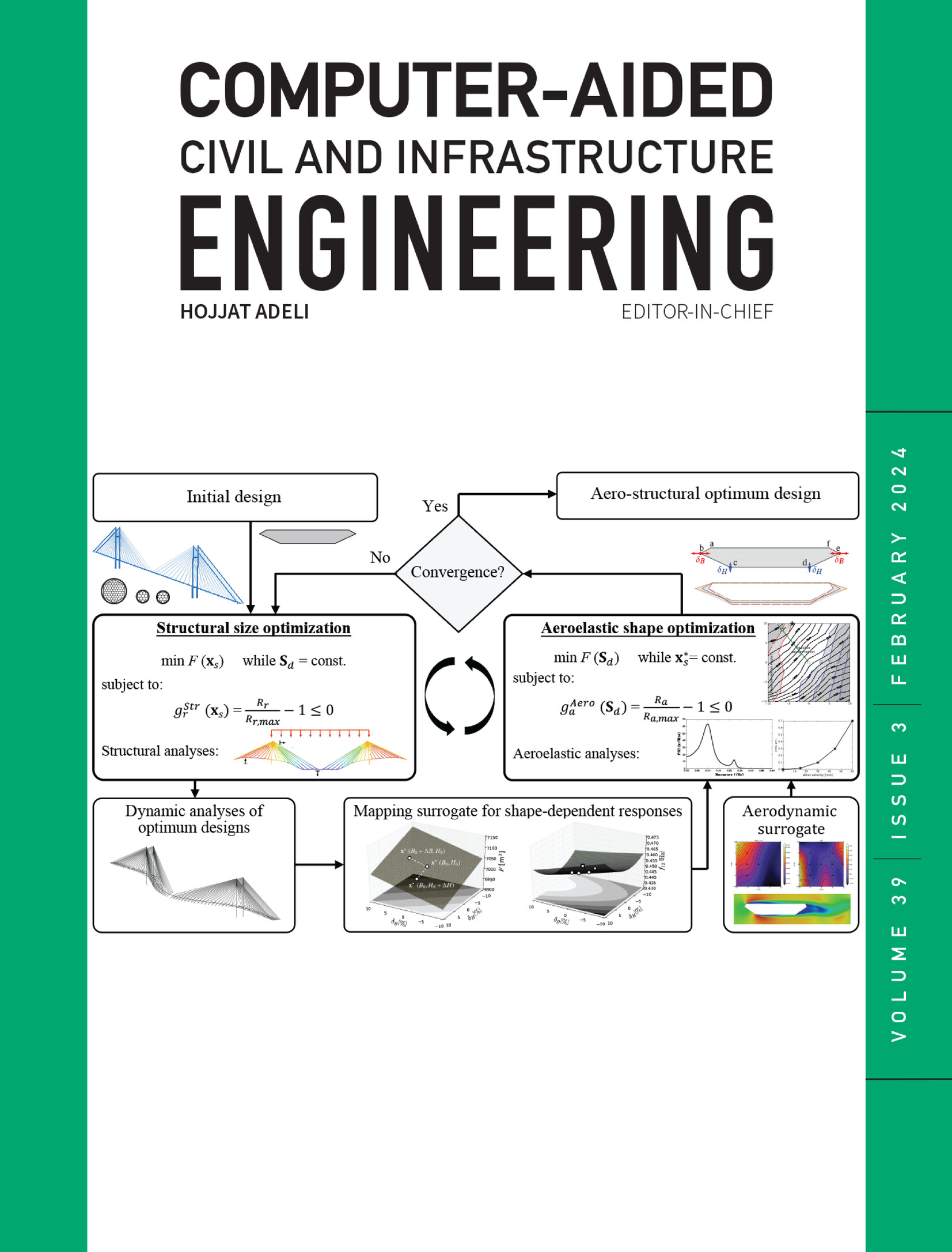Hybrid structural analysis integrating physical model and continuous-time state-space neural network model
IF 8.5
1区 工程技术
Q1 COMPUTER SCIENCE, INTERDISCIPLINARY APPLICATIONS
引用次数: 0
Abstract
The most likely scenario for civil engineering structures is that only some components or parts of a structure are complex, while the rest of the structure can be well physically modeled. In this case, utilizing powerful neural networks to model these complex components or parts only and embedding the neural network models into the structure might be a viable choice. However, few studies have considered the real-time interaction between the neural network model and another model. In this paper, a new hybrid structural modeling strategy that incorporates the neural network model is proposed. Structures installed with energy dissipation devices (EDDs) are investigated, where continuous-time state-space neural network (CSNN) models are adopted to represent EDDs and to couple with the physical model of the structure excluding EDDs through the state-space substructuring method. First, CSNN models with an identical model configuration are trained to represent different physical models of EDDs and fit the experimental results of a damper to evaluate the CSNN model at the model level. Then, to demonstrate the hybrid structural analysis method, the CSNN-based structural models of the interfloor-damped and base-isolated structures are established for seismic analyses. It is observed that CSNN-based models exhibit high prediction performance and are easy to implement. Therefore, the developed hybrid structural analysis method that adopts CSNN models for EDDs is engineering practical.集成物理模型和连续时间状态空间神经网络模型的混合结构分析
土木工程结构最有可能出现的情况是,结构中只有部分组件或部件是复杂的,而结构的其余部分可以很好地进行物理建模。在这种情况下,利用功能强大的神经网络仅对这些复杂的组件或部分进行建模,并将神经网络模型嵌入结构中,可能是一种可行的选择。然而,很少有研究考虑神经网络模型与其他模型之间的实时交互。本文提出了一种结合神经网络模型的新型混合结构建模策略。本文研究了安装有能量耗散装置(EDDs)的结构,采用连续时间状态空间神经网络(CSNN)模型表示 EDDs,并通过状态空间子结构方法与不包括 EDDs 的结构物理模型耦合。首先,训练具有相同模型配置的 CSNN 模型来表示不同的 EDD 物理模型,并拟合阻尼器的实验结果,在模型层面对 CSNN 模型进行评估。然后,为了演示混合结构分析方法,建立了基于 CSNN 的层间阻尼结构和基底隔震结构模型,用于地震分析。结果表明,基于 CSNN 的模型具有很高的预测性能,并且易于实现。因此,所开发的采用 CSNN 模型的 EDD 混合结构分析方法具有工程实用性。
本文章由计算机程序翻译,如有差异,请以英文原文为准。
求助全文
约1分钟内获得全文
求助全文
来源期刊
CiteScore
17.60
自引率
19.80%
发文量
146
审稿时长
1 months
期刊介绍:
Computer-Aided Civil and Infrastructure Engineering stands as a scholarly, peer-reviewed archival journal, serving as a vital link between advancements in computer technology and civil and infrastructure engineering. The journal serves as a distinctive platform for the publication of original articles, spotlighting novel computational techniques and inventive applications of computers. Specifically, it concentrates on recent progress in computer and information technologies, fostering the development and application of emerging computing paradigms.
Encompassing a broad scope, the journal addresses bridge, construction, environmental, highway, geotechnical, structural, transportation, and water resources engineering. It extends its reach to the management of infrastructure systems, covering domains such as highways, bridges, pavements, airports, and utilities. The journal delves into areas like artificial intelligence, cognitive modeling, concurrent engineering, database management, distributed computing, evolutionary computing, fuzzy logic, genetic algorithms, geometric modeling, internet-based technologies, knowledge discovery and engineering, machine learning, mobile computing, multimedia technologies, networking, neural network computing, optimization and search, parallel processing, robotics, smart structures, software engineering, virtual reality, and visualization techniques.

 求助内容:
求助内容: 应助结果提醒方式:
应助结果提醒方式:


